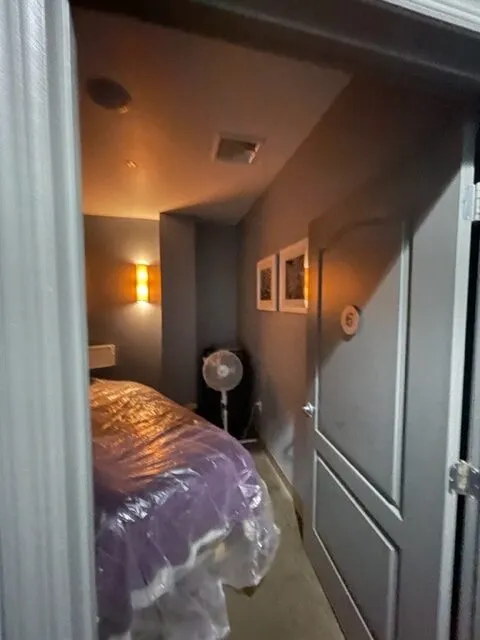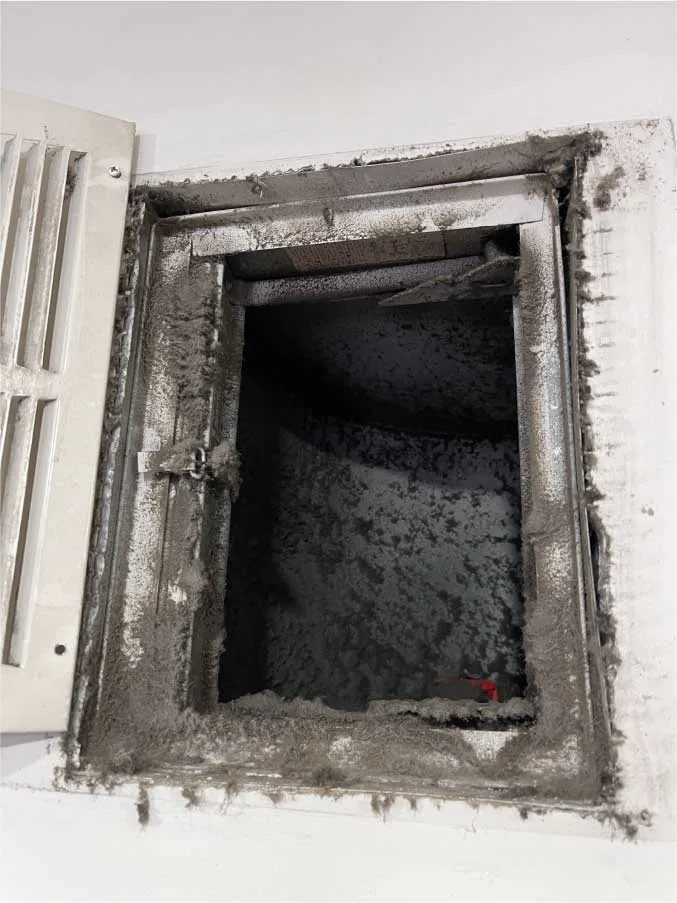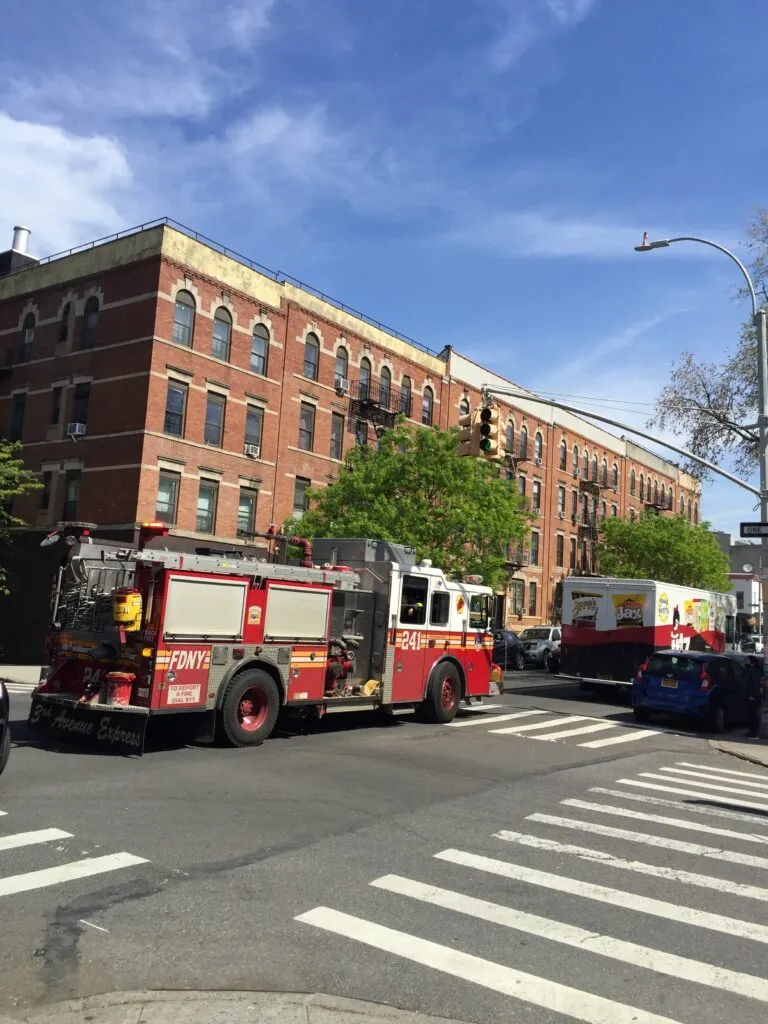Hospital HVAC Cleaning during Covid. Hospital HVAC Cleaning and Air Ducts Disinfection. What are the benefits?
The SARS-CoV-2 outbreak has prompted all of us to reevaluate hospital indoor air quality and methods for removing, diluting, and disinfecting harmful organisms from the hospital setting.
HVAC systems must be included in the infection control plan of a hospital. There are four primary ways that diseases can spread, and HVAC design is crucial for preventing the spread of airborne infections. Not to forget that viruses, bacteria, or fungi can all cause infections. The diseases are spread in the following ways:
- Direct touch
- Airborne transmission
- Indirect contact
- Droplet transmission
Droplet nuclei or dust particles that spread airborne, such as chicken pox, tuberculosis, measles, or legionella bacteria, will survive for a long time. This is where hospital HVAC cleaning come into play.
Hospital HVAC cleaning is crucial to the well-being of patients and the prevention of disease transmission since air ducts not only ensure suitable climate conditions of temperature and humidity regulation but also must keep the area clean and microbe-free.
Due to these influencing factors, it is necessary to pay particular attention to several features when designing air conditioning systems for the hospital sector, even though they are significant in other sectors.
Hospital Air Ducts Cleaning to Protect Workers from COVID-19 Spread
This fact has been highlighted during the COVID-19 outbreak that health workers are more prone to catching infections as they are more exposed to infections and hazards while working on the frontline.
Hazards don’t only include medical illness but also include pathogen exposure, long working hours, emotional stress, exhaustion, occupational burnout, stigma, and physical and psychological aggression.
The top concerns should be protecting medical personnel and ensuring that intensive care units (ICUs) are ready to handle an epidemic outbreak (cleanliness-wise).
The role of healthcare professionals in the transmission of pathogens from patient to patient is well known, but what’s more important is that the infected environment plays a much larger role in pathogen transmission.
High-touch surfaces in particular are now understood to be a potential source of infection spread, which is why healthcare workers are more likely to contract an illness.
Since the discovery of the coronavirus during hospital air ducts cleaning, researchers now think the illness may be more dangerous than previously thought because it may be transmitted through air conditioners.
COVID-19 has been discovered in several hospital air conditioning vents during hospital HVAC cleaning, raising concerns about the filtration systems in many buildings.
Pathogens spread through the air by droplets and aerosols, which are commonly produced by breathing, sneezing, screaming, coughing, flushing the toilet, and various medical operations.
It is recommended that hospitals should install and properly clean heating, ventilation, and air conditioning (HVAC) systems to provide healthcare workers with a safe environment for their interactions with the most contagious patients as well as minimize exposure when contaminants are discharged during procedures.
As long as the HVAC systems are regularly maintained and cleaned, they will be able to provide a clean environment in the hospital. Therefore, air ducts disinfection and hospital HVAC cleaning is mandatory to make your HVAC system work effectively.
3 Effective Strategies for Eliminating Airborne Contaminants in Hospitals
- First Line of Defense: Use ultraviolet germicidal (UV-C) lights with room air cleaners.
Although the guidance suggests that this equipment is only appropriate for healthcare establishments, it is successful at eradicating germs and viruses when used for supply-air or room-air treatment.
Numerous microorganisms, including bacteria, viruses, fungi, and spores, can be inactivated using UV-C light. The inactivation of these particles depends upon the exposure time and intensity of UV-C light.
- Second Approach: Natural Ventilation
In buildings where there is no mechanical ventilation, you should opt for natural ventilation methods such as a more open window-centric approach. Even if doing so results in discomfort from the heat, using windows that can be opened is advised.
Windows should be opened in even buildings with mechanical ventilation. Because mechanical ventilation and natural ventilation are both beneficial for the health of the building.
- The Third Approach (Humidification)
In terms of climatic changes, COVID-19 is robust and only becomes vulnerable to extremely high relative humidity (RH), above 80%, and a temperature above 30 °C, which is not comfortable from a thermal comfort standpoint.
Due to the increased susceptibility of mucosal membranes and nasal systems to infections at very low relative humidity (RH) levels of 10–20%, humidification is advised during the winter months (up to a level of 30%).
Hospital HVAC Cleaning for Virus Removal in Hospital Indoor Air
- We know that COVID is in the air, which means there is an increased risk of COVID-19 infection indoors. Insufficient ventilation has often been found as a risk factor for COVID-19 spread.
- By enhancing outdoor air ventilation and/or enhancing filtration wherever possible, as part of a multilayered strategy following public health guidelines, well-functioning HVAC systems can complement other public health measures by reducing the amount of viruses in indoor air, thereby reducing the risk of contracting COVID-19.
- Ventilation and filtration are crucial elements in a plan to improve indoor air quality because they allow gases, vapors, and airborne particles, such as dust and aerosols that contain viruses, to be expelled or captured.
- A reduction in occupant exposure may be achieved by removing these particles from the indoor air.
- The system requires regular inspections and maintenance as needed. For regular inspections and maintenance, it’s always recommended to contact professional hospital air duct cleaning services, who know their job well.
- Chances are that you may damage the hospital ducts if you wish to do hospitals air ducts cleaning on your own.
The major functions of heating, ventilation, and air-conditioning (HVAC) systems have historically been to offer thermal comfort to building occupants and to assist in maintaining excellent indoor air quality through appropriate ventilation with filtration.
Using ventilation and filtration to remove and dilute virus-laden particles from indoor air can reduce the SARS-CoV-2 transmission risk. Ventilation and filtration cannot control transmission risks on their own, and this is particularly true for close-contact exposures.
Vaccination, restricting contacts, screening and self-isolation of those with symptoms, physical distance, hand hygiene, and well-fitting masks or respirators for personal protection are other crucial prevention strategies.
Therefore, even though ventilation and filtration are crucial for improving indoor air quality in general and lowering the risk of contracting COVID-19, they must be utilized in combination with other public health measures to reduce the chance of transmission.
Strategies for Hospital HVAC Cleaning in the Post-COVID-19 Era
 Hospital air ducts cleaning BenzVac
Hospital air ducts cleaning BenzVac
Hospital air ducts cleaning
The recent pandemic made it clear that there is a pressing need to comprehend and put into practice the design, maintenance, and operations that guarantee indoor air quality in healthcare facilities.
- Recommendations for Air Handling Units (AHUs)
When planning a new hospital, design your AHUs with dual conditions for heating and cooling coils, understanding how critical it is to bring outside air into hospitals during a pandemic situation: a minimum amount of outside air intake during normal conditions and a 100 percent amount of outside air intake during pandemics and emergencies.
For these circumstances, standby heating and cooling capacity can be set to use more outside air.
More hospitals would use chilled water cooling systems if they included standby cooling equipment in their design.
Direct expansion systems that utilize air cooling are frequently used in smaller establishments. However, they frequently lack additional capacity to boost outside air without reducing comfort. The majority of building codes currently call for backup heating systems.
The idea would be to utilize the standby capacity in case of emergencies.
The minimum distance between an exhaust source and an outside air intake source mandated by current hospital codes is 25 feet. However, economizer return fans are exempt from this.
Further research is needed in this area because best practices call for a similar separation from the intake source if return fans are employed for emergency exhaust.
Take into account the use of high-intensity UV lighting or other comparable air treatment devices at the cooling coils. They might be successful in destroying a significant portion of the virus particles going through the AHU, in addition to aiding in coil maintenance.
- Recommendations for Ventilator Support
Obtaining the necessary volumes of medical-grade air and oxygen to sustain the ventilators needed to treat the sickest patients was one of the COVID-19 refit projects’ most difficult challenges.
It’s crucial to precisely predict future ventilator loads while creating a new hospital. It is challenging to convert conventional med/surg beds to ICU/CCU beds because ventilators need access to medical-grade air in addition to oxygen.
Consider building larger pipes when designing future hospitals since they can accept far more medical air or oxygen for a lot less money than it would cost to retrofit a med/surg floor, making it simple to convert med/surg floors to ICU or CCU beds.
- Recommendation for a Negative Pressure Environment
As a result of mechanical ventilation systems, negative-pressure rooms have a pressure that is slightly lower than the entry pressure, enabling air to flow into the isolation room but not leave it.
Due to the natural flow of air from areas with high pressures to areas with low pressures, contaminated air is prevented from leaving the isolation room.
Negative pressure room construction calls for extra care to be taken with small details, such as caulking all wall penetrations and using monolithic gypboard ceilings. Also frequently employed are door sweeps and seals. They are, consequently, far more expensive to build.
- Recommendations for HEPA Filtration
HEPA particle filtering should be properly implemented and maintained in hospital HVAC systems to reduce the possibility of viruses propagating in the future. Airborne particles, microorganisms, and other contaminants can be captured and removed from an indoor space using HEPA filters.
If you plan to install a HEPA filtering system, make sure your HVAC system is designed to support its use with adequate fan power at the air handling units (AHUs).
On AHUs that supply negative pressure zones, think about installing HEPA filter racks. Another alternative is to install HEPA racks in air handlers that you won’t use during regular operations; you’ll only use the HEPA filters during a pandemic.
This would allay any worries about the expense of operating and maintaining HEPA filters.
- Recommendations for Air and Exhaust Air
A new hospital’s design should take into account return air and exhaust air best practices in addition to the importance of outside air intake. In certain configurations, mechanical rooms get a return or relief air discharge.
It would be better to avoid such situations in the future and have the return air ducted outside so that infection risks are reduced and emergency exhaust can be emitted through return fans.
In isolation rooms, return air grills must be placed over the patient’s bed or in the headwall to comply with the code.
In the future, perhaps the return grills for med/surg patient rooms could likewise be located on the headwall rather than at the entry. For non-infected people who are prone to infection, a doorway placement is more suitable.
The placement of the return grilles in the med/surg patient rooms should be carefully examined by the hospital during design because these are two competing orientations. A patient’s room could be equipped with two return air grilles, one by the door and one by the bed, each sized for 100 percent airflow.
As a result, the facility would be able to isolate one of the grills based on usage, such as normal or pandemic.
Installing specialized pandemic exhaust risers with exhaust fans intended to vent the entire floor or another specific area may be an alternative to employing return fans for emergency exhaust.
Reduce the usage of flexible ducts for return and exhaust air regardless of the design that is used; they are readily blocked by lint and dust, which drastically lower airflow.
Healthcare-Associated Infections Can Be Caused By Dirty Ductwork
Hospitals serve as hubs for the emergence and transmission of germs. Every surface accumulates dirt, dust, and debris, which are simple to clean on floors and walls since they are frequently visible, but the same contaminants are invisible in hospital ducting.
Healthcare-associated infections (HCAIs) are likely to develop and spread if ductwork is not cleaned. Clean ventilation systems have always been important, but COVID-19 emphasizes the importance of proper maintenance. For example, influenza and the common cold are spread through dirty ventilation systems.
This is why air ducts disinfection and hospital HVAC cleaning is crucial for the prevention of the spread of healthcare-associated infections.
While it is admirable to change the filters frequently, filters do not stop bacteria from growing, so this is inadequate. To have the best possibility of lowering the growth of germs and the resultant reduction of related diseases, this must be done in conjunction with routine hospital air duct cleaning.
This is so because components that encourage the growth of microbes combined with the temperature and humidity levels are found in air conditioning and heating systems, thus making for a hazardous combination. In the absence of regular hospital air duct cleaning, dangerous particulate matter can thrive in your HVAC ducts.
While hospitals have always placed high importance on the air ducts disinfection and hospital air ducts cleaning to prevent the spread of diseases and viruses, routine hospital air duct cleaning has only recently gained considerable attention.
How to Pick the Best HVAC System for a Hospital
To uphold standards throughout the hospital environment and to adhere to construction rules, hospitals may need a variety of HVAC systems.
Setting goals is the first step in beginning a ventilation system project. Do you intend to decrease air contamination, decrease infections caused in hospitals, or enhance comfort for patients?
Next, determine the precise ventilation needs for each space in cooperation with the hospital staff. To define the project’s bounds, decide on the financial and structural constraints of the building design.
Hospital Air Ducts Cleaning
Calculate the system loads for each part of the facility in collaboration with an HVAC expert. This will assist you in determining the kind of systems and equipment you require for each hospital department.
Once you have a few alternative ideal systems to pick from, determine which one delivers the best balance of energy efficiency and affordability by calculating each system’s life cycle cost.
Final Thoughts
Hospital air duct cleaning and adequate ventilation in hospitals have always been important, it’s just that COVID-19 has alerted all the concerned hospital authorities to focus on maintaining hospital indoor air quality to stop the spread of this deadly disease.
Air ducts disinfection and hospital air ducts cleaning can help a great deal in preventing the COVID-19 spread, as clean ducts will only throw pure and clean air into the indoor hospital environment.




